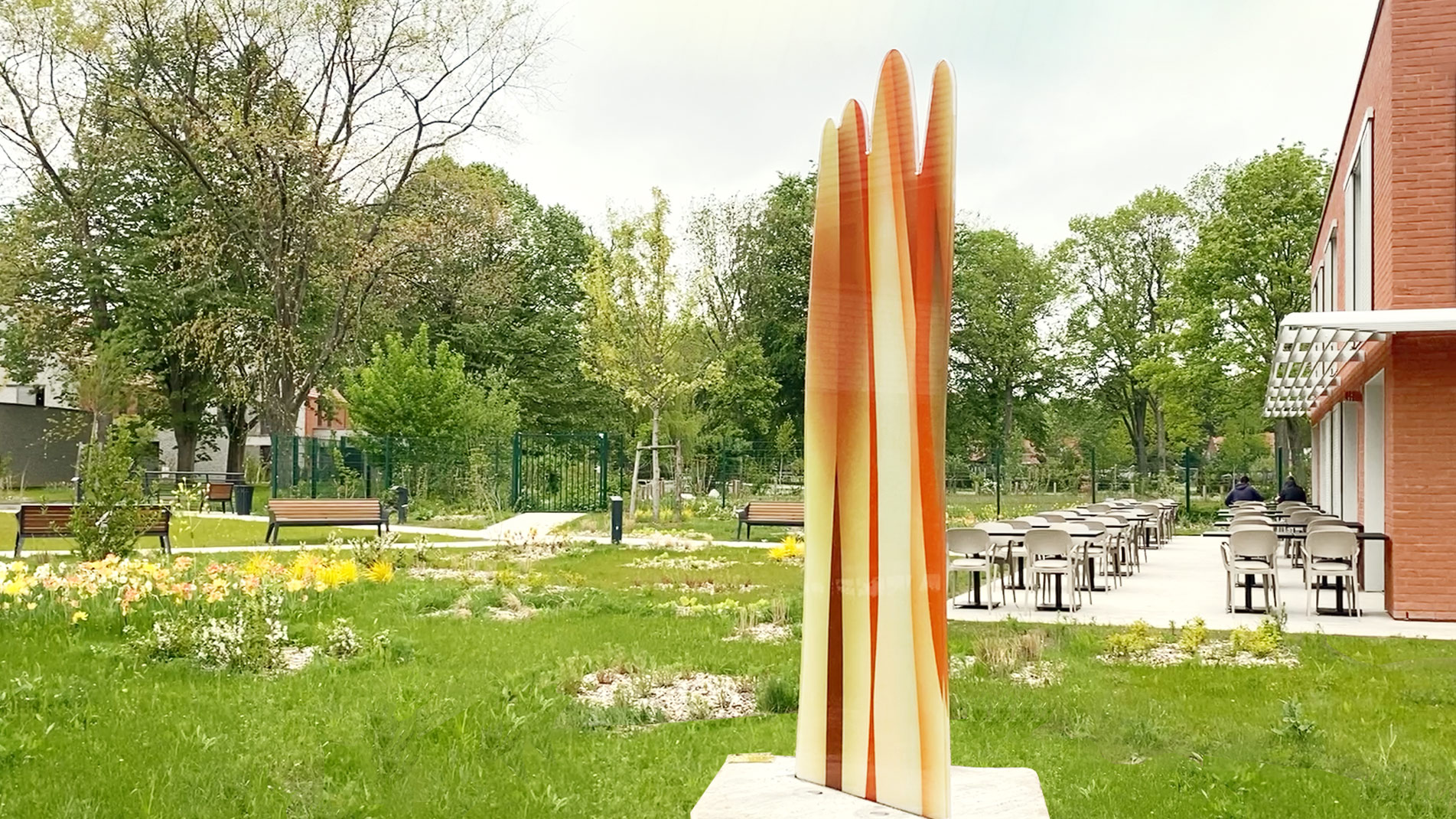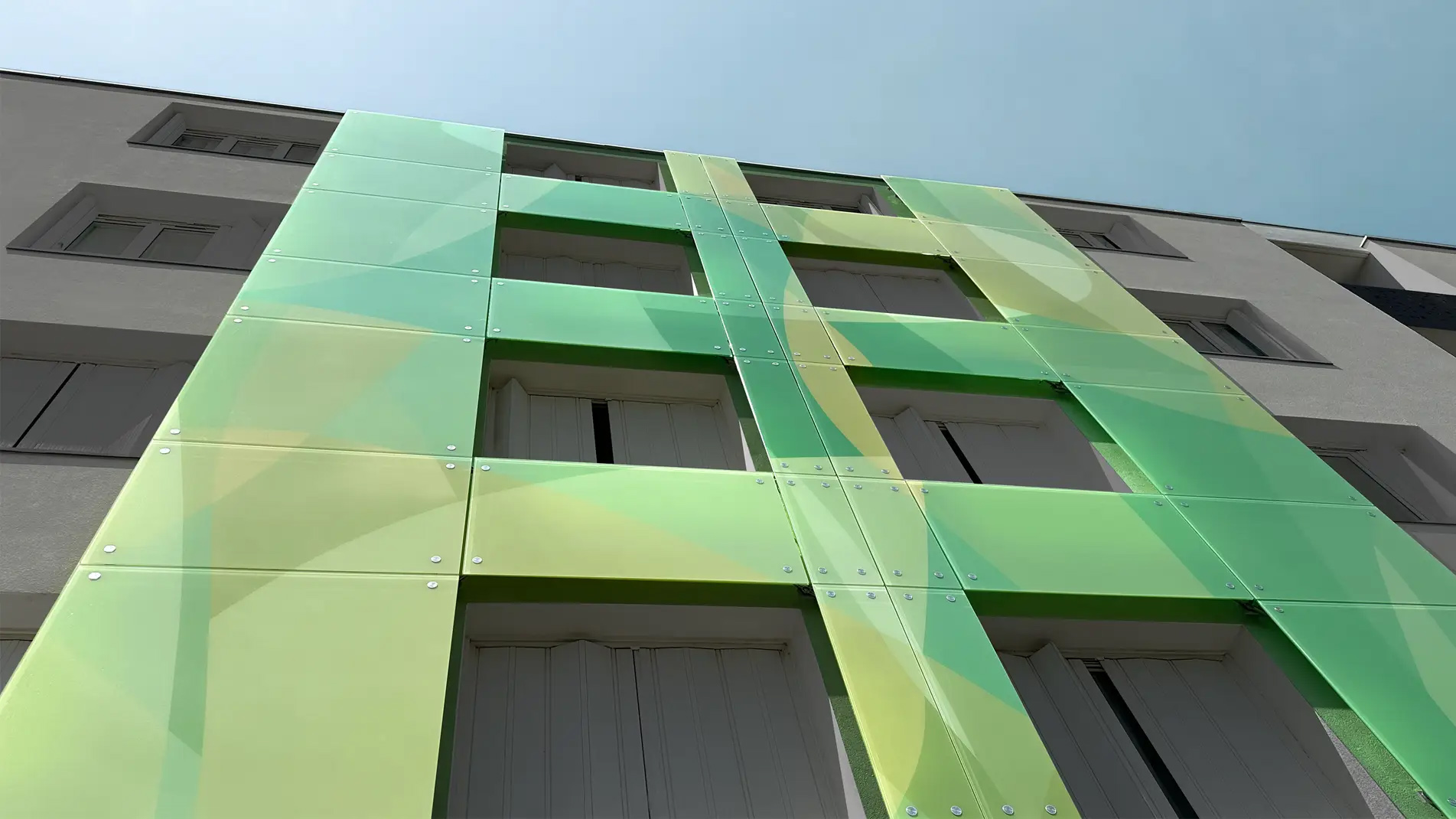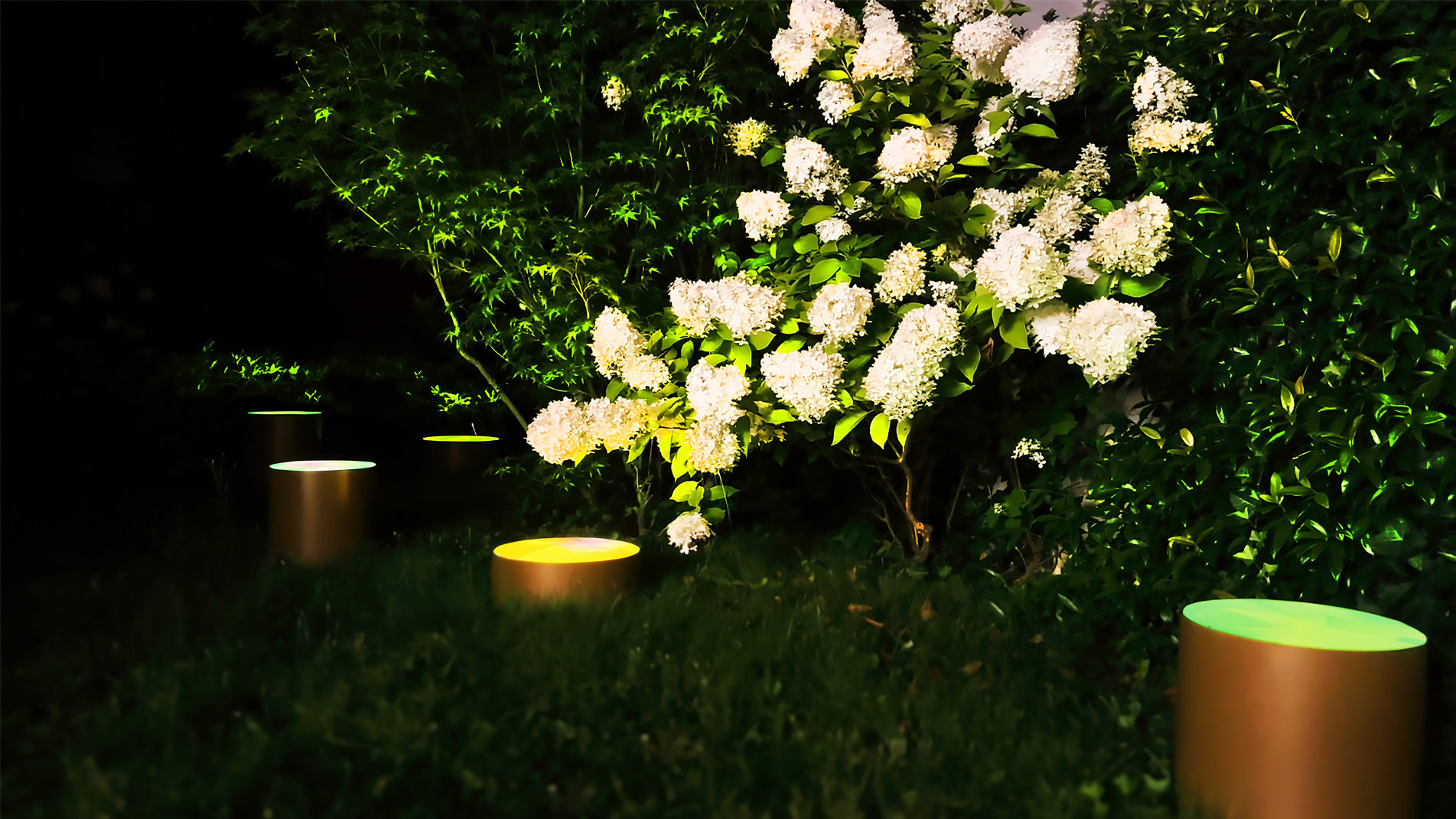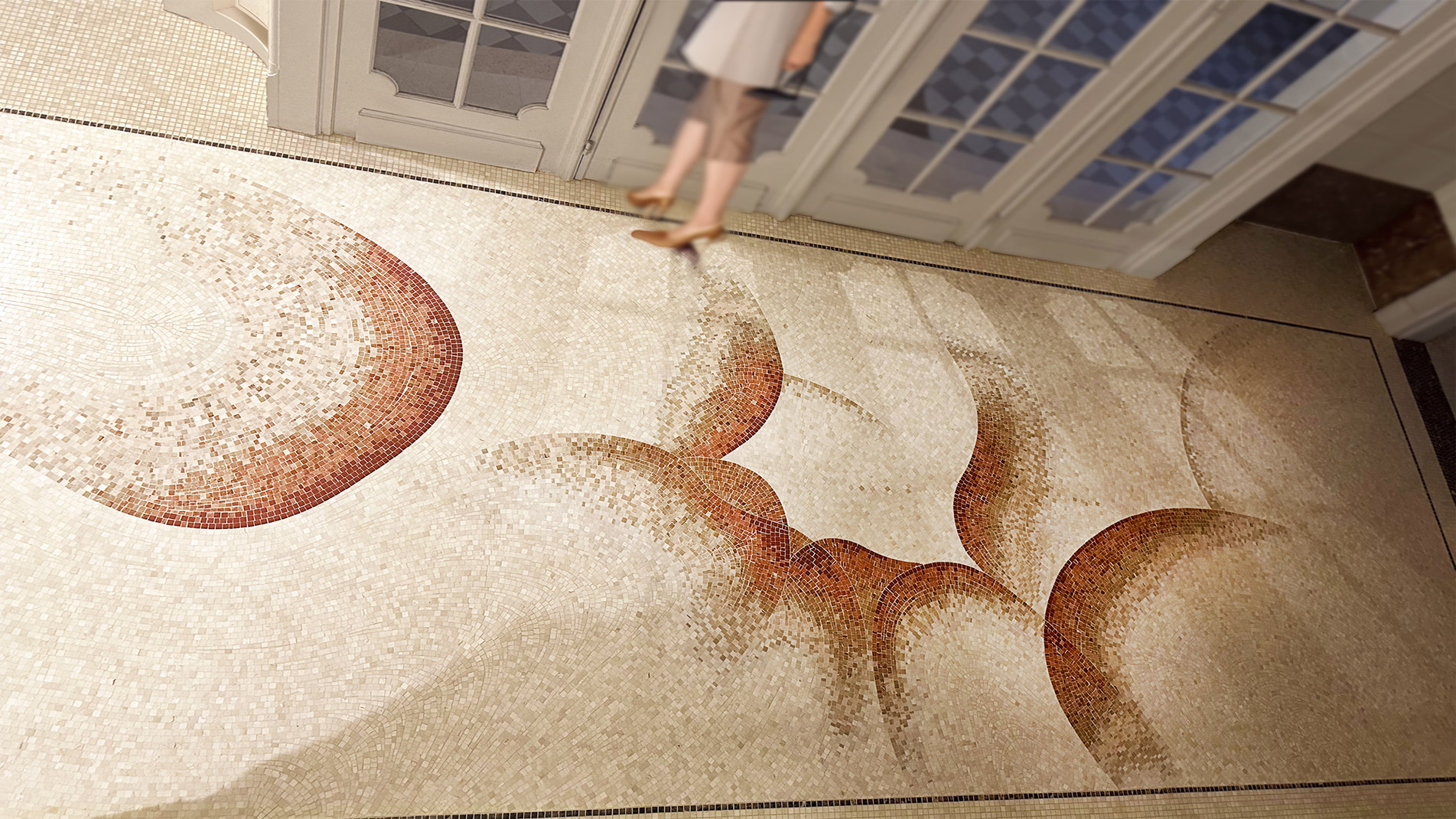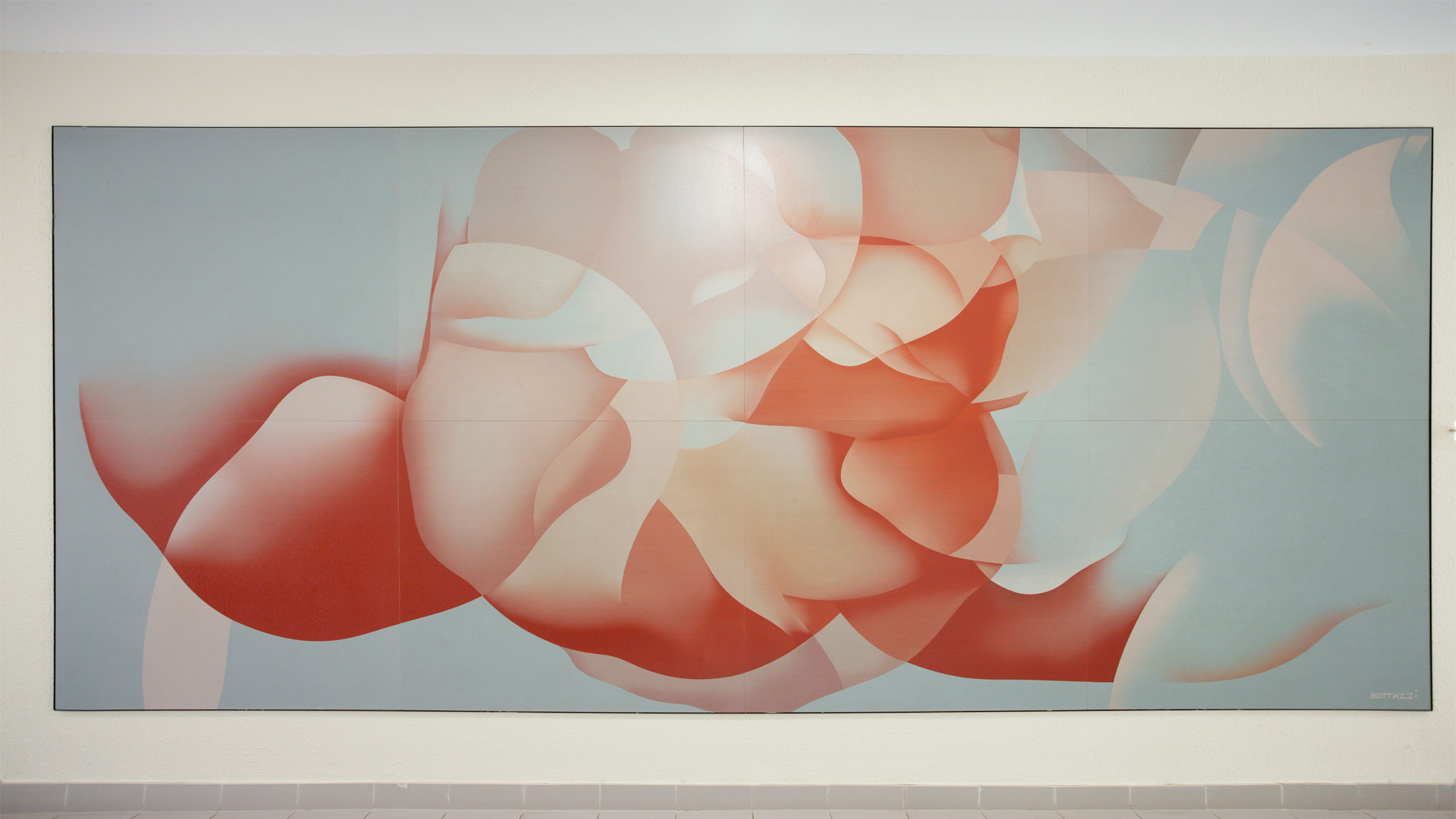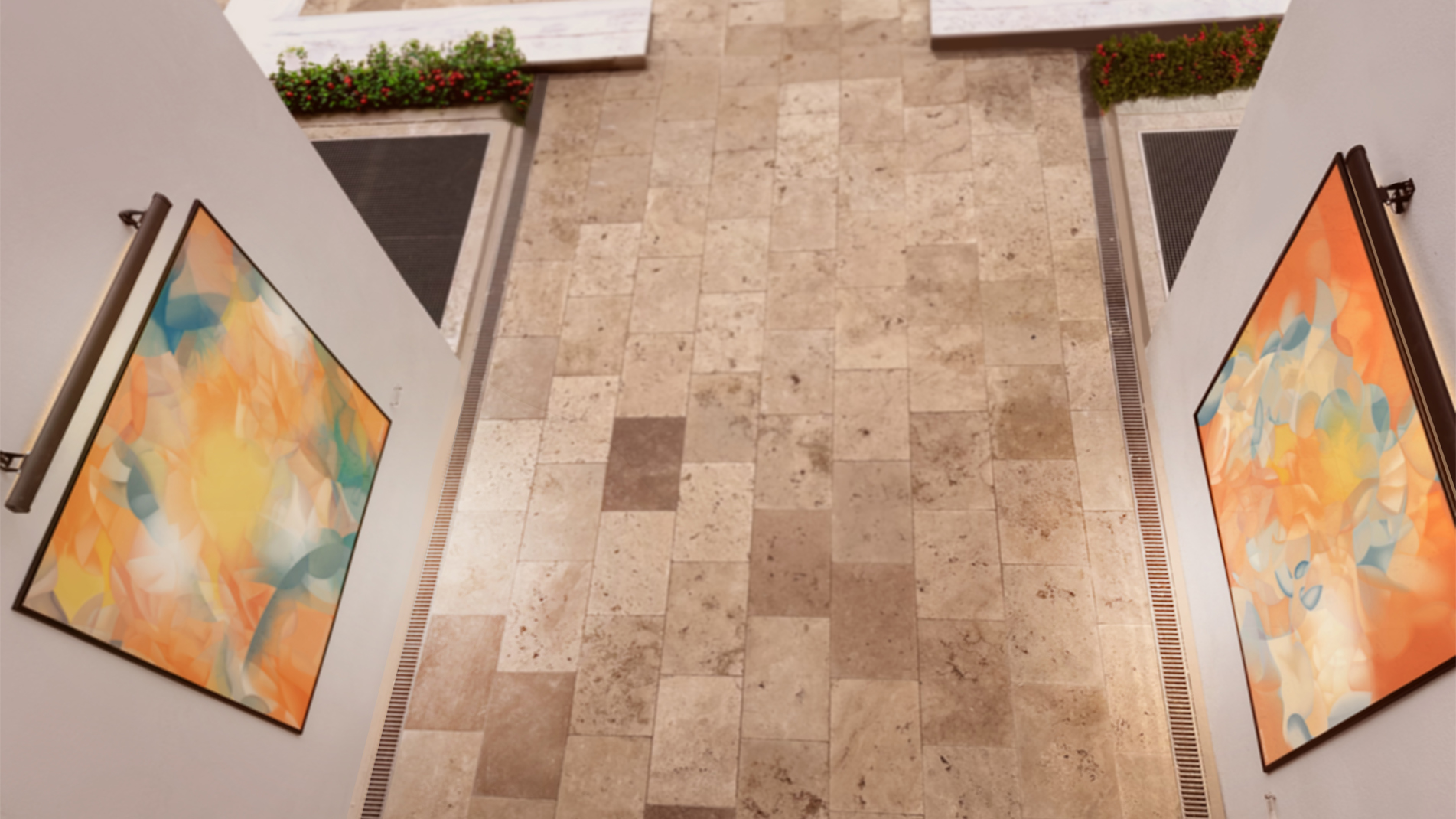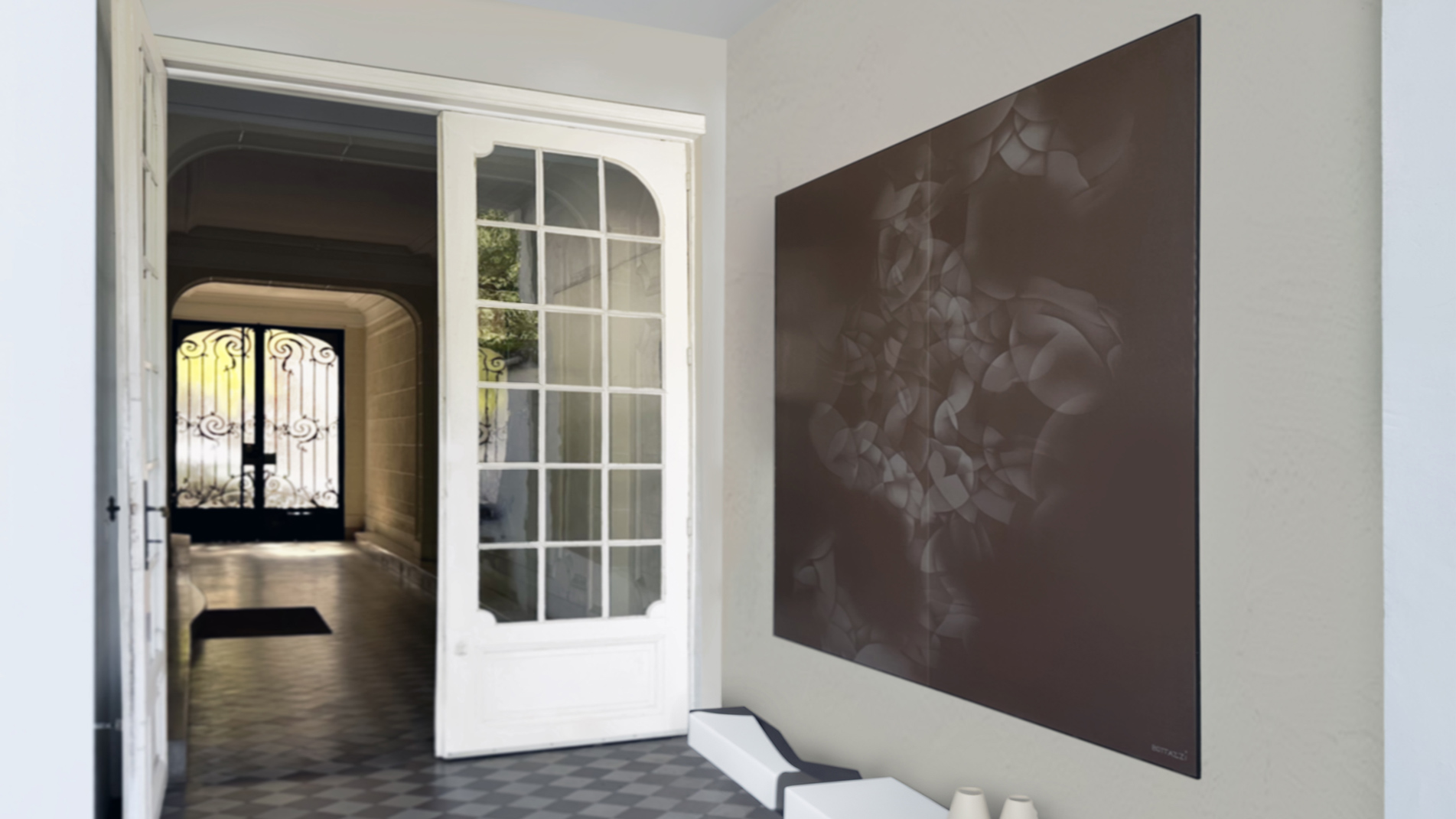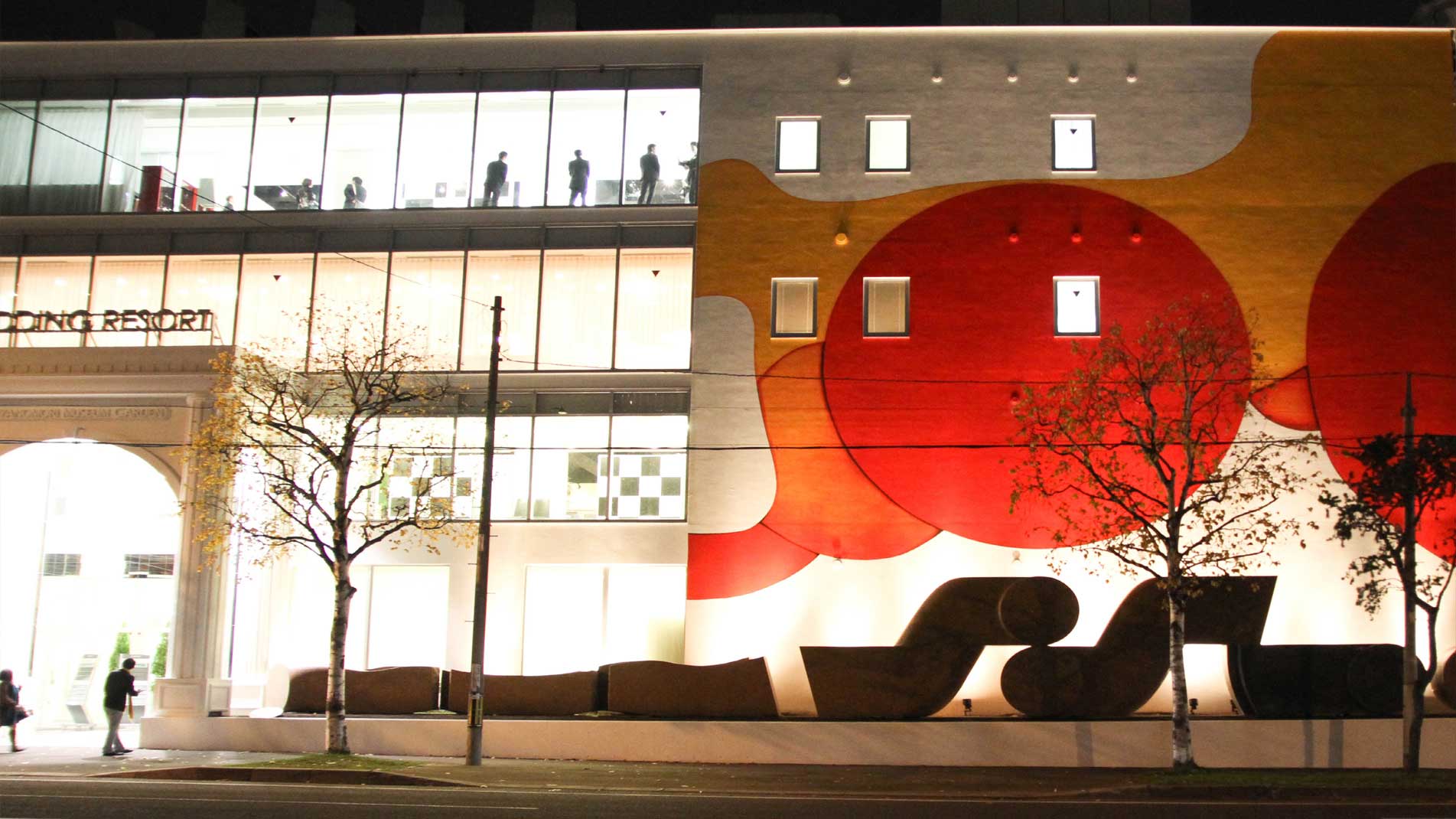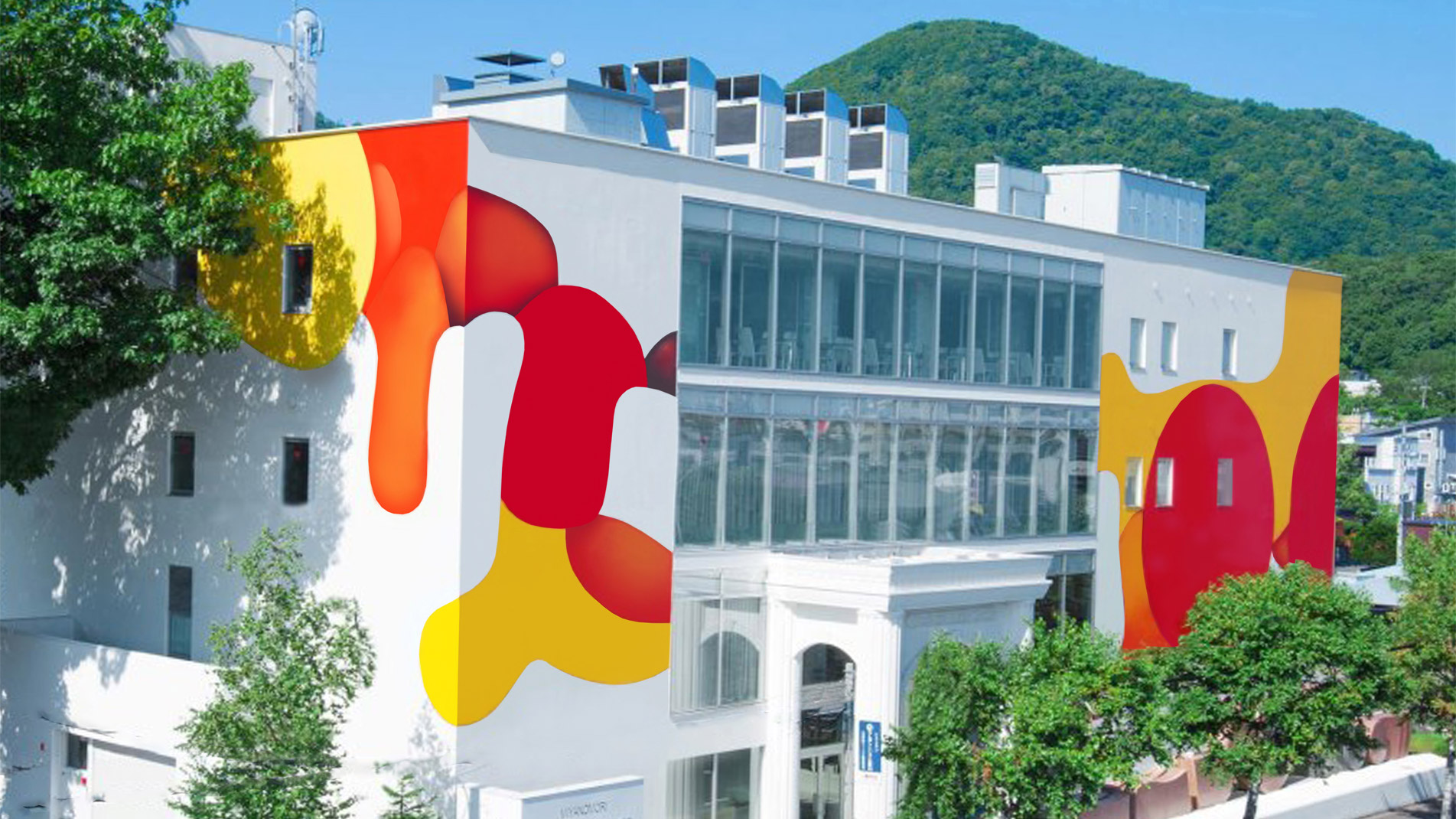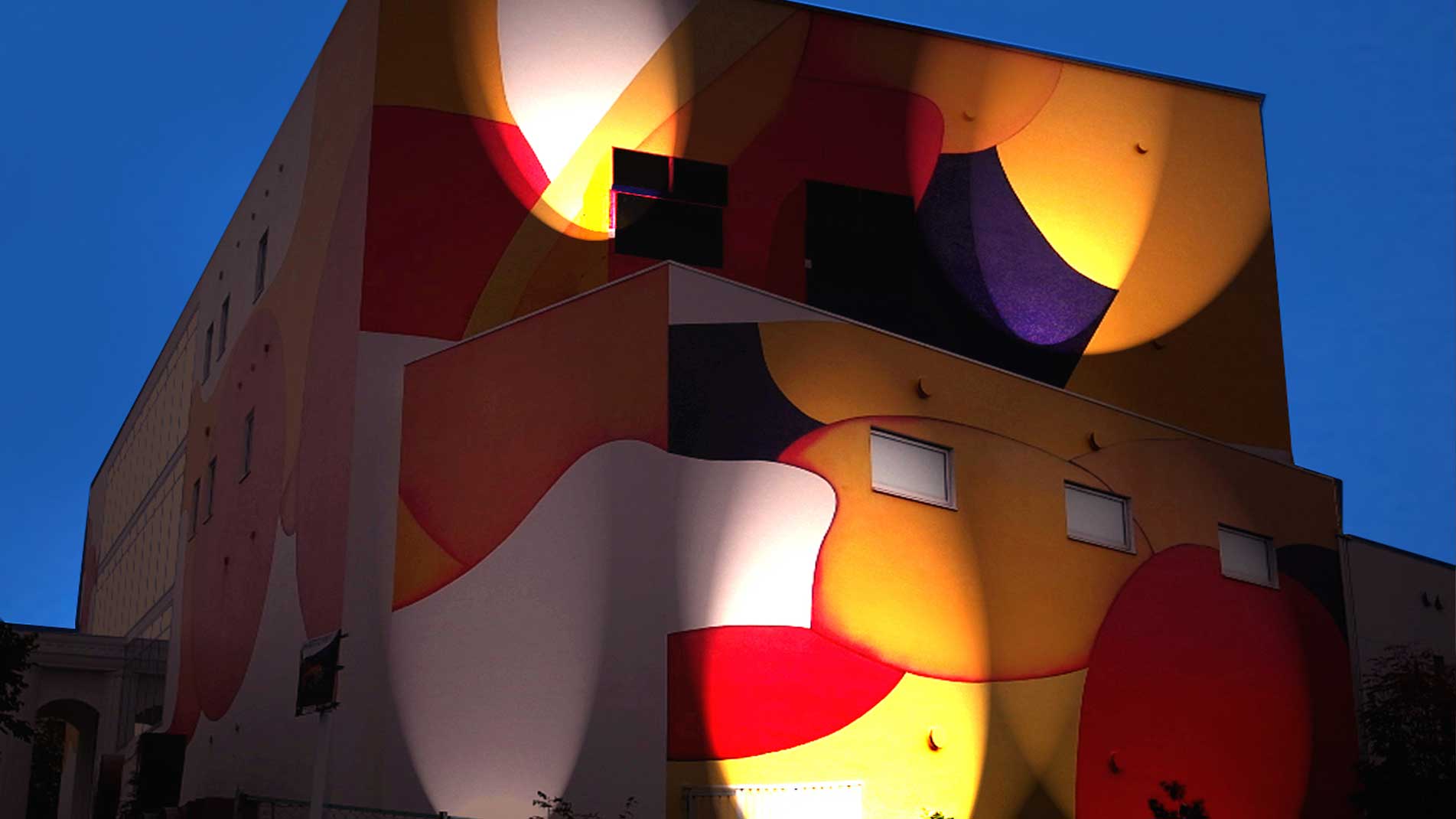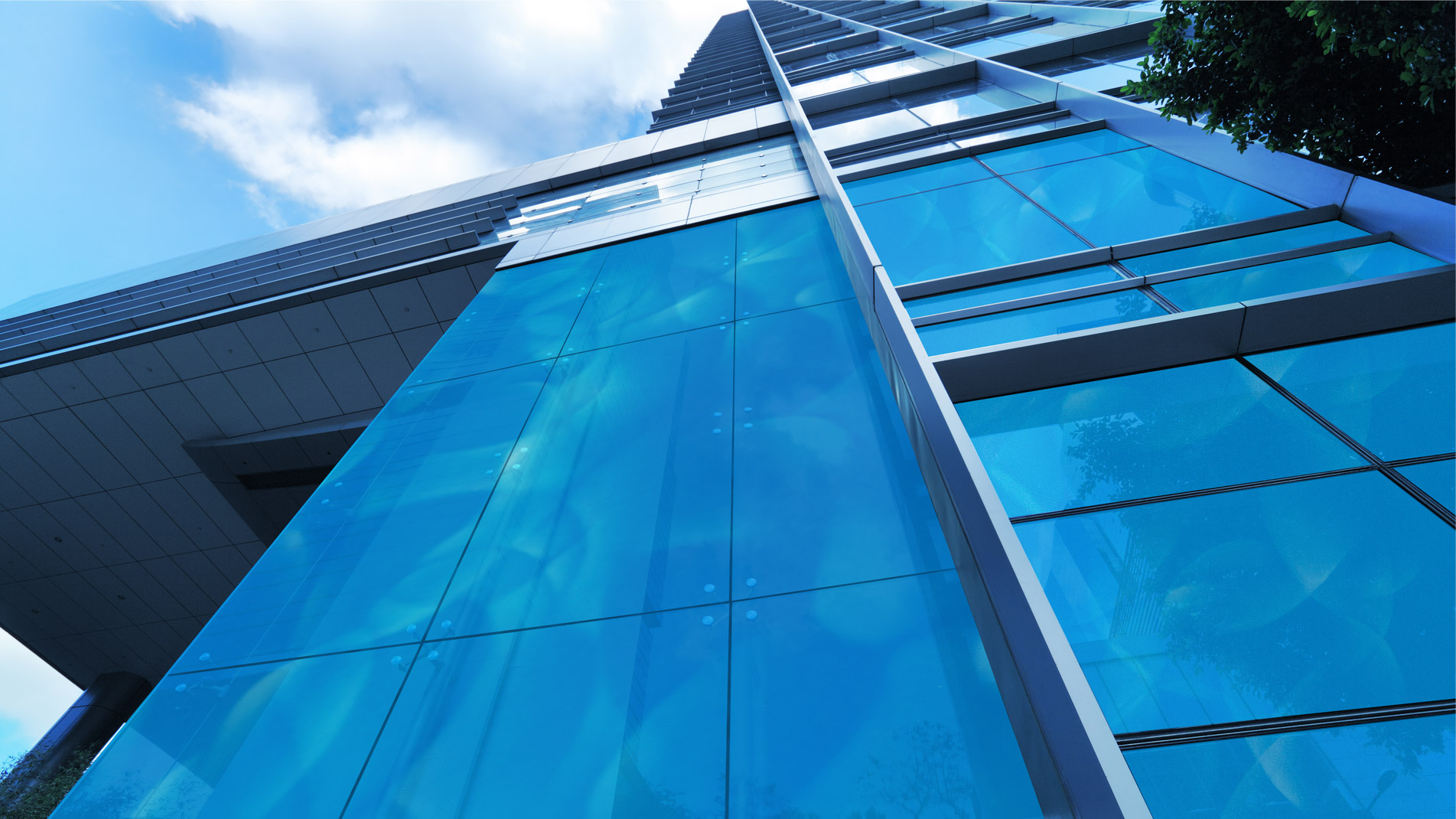Public art outdoor
“For the past 30 years, the prolific Guillaume Bottazzi has been travelling the world to disseminate works in situ. A keen espouser of enamel and fabric, he is an ambassador for environmental art.”
Le Monde newspaper, September 2020
“French artist recognized as one of the pioneers of neuro-aesthetics, Guillaume Bottazzi has created more than 100 works of art in public spaces over the last thirty years. His environmental artworks, both indoors and outdoors, are the result of a holistic approach incorporating a range of parameters.”
La Libre Belgique newspaper, January 2023
“With one in five of us reportedly affected by mental-health issues, anything that helps to make us happier is a huge plus. If that thing is also aesthetically pleasing, all the better. With the World Health Organization confirming that art can improve human health, French painter Guillaume Bottazzi has devoted much of his work to this realm.”
INTERIOR DESIGN magazine, August 2024
“Guillaume Bottazzi’s poetic creations invite us to experience a richer life, to strengthen our essence, to build our evolution in their company, within a magical universe. […] They give birth to poetic and enchanting spaces, whose metamorphosis follows the whims of our imagination.”
Muuuz magazine, September 2023
“The works of Guillaume Bottazzi create dreamlike spaces a dreamlike space in which we live. Space does not exist in itself but is a mental construction. These works beyond reality modify our environment and make our dream.”
TL Magazine, may 2021
“At a time when mental well-being is becoming an increasingly important concern, Guillaume Bottazzi’s works of art are a breath of fresh air.[…] These works decorate, yes, but they also transform our relationship with space, modulating our emotions and our well-being. Using materials such as enamel on tempered and laminated glass, Bottazzi creates a play of light and colour that invites contemplation and serenity.”
Muuuz magazine, February 2024
“Few artists can claim to create works that make us feel good with scientific evidence to back them up. This is the case with Guillaume Bottazzi, whose works have been the subject of a scientific study in cognitive psychology entitled “The art of curves in the real world, a psychological look at the works of Guillaume Bottazzi”, which proves that the painter’s creations do the viewer good. They reduce anxiety and produce dopamine.”
La quotidienne, July 2022
“Guillaume Bottazzi and the art of happiness. Art undoubtedly has the power to enrich our lives, but according to various research studies, it could also make us happy, as reported in an official statement by the World Health Organisation published in 2019. This is demonstrated by the art of Guillaume Bottazzi, an artist whose environmental, monumental and permanent works are exhibited around the world, and whose dream is to paint with light to bring well-being.”
Luce magazine, December / January / Febuary 2025
“The Miyanomori Art Museum in Sapporo has decided to give French artist Guillaume Bottazzi carte blanche to decorate its 900m2 of facades. The Japanese institution could not have chosen an artist according more closely to its own views: since the 1990s, the artist has been using fresh and colourful paint on wall and canvas, which has earned him a number of exhibitions and public commissions in France and Japan.”
L’Oeil magazine & Le Journal des Arts, December 2011
“The French artist has just completed Japan’s largest mural at the Miyanomori Art Museum in Sapporo. This 900m² work was initiated as part of the “Hope 2011” event, constituting a tribute to the victims of the March 2011 earthquake and tsunami.”
Flux News, quarterly magazine of contemporary art news, January / February / March 2013
“Guillaume Bottazzi, who has visited Japan on many occasions, was greatly dismayed by the terrible impact of the earthquake and tsunami that devastated Japan in March 2011. The decision to rebuild the museum and to ask a leading European artist to join this message of hope marked by the rebirth of the museum proves that contemporary art can stimulate courage by showing the way to reconstruction.”
Le courrier de l’Architecte magazine, September 2011
“Guillaume Bottazzi, pioneer of Neuroaesthetic stream, has since over 30 years signed about 100 artworks in public spaces.”
Les Echos newspaper, May 2021
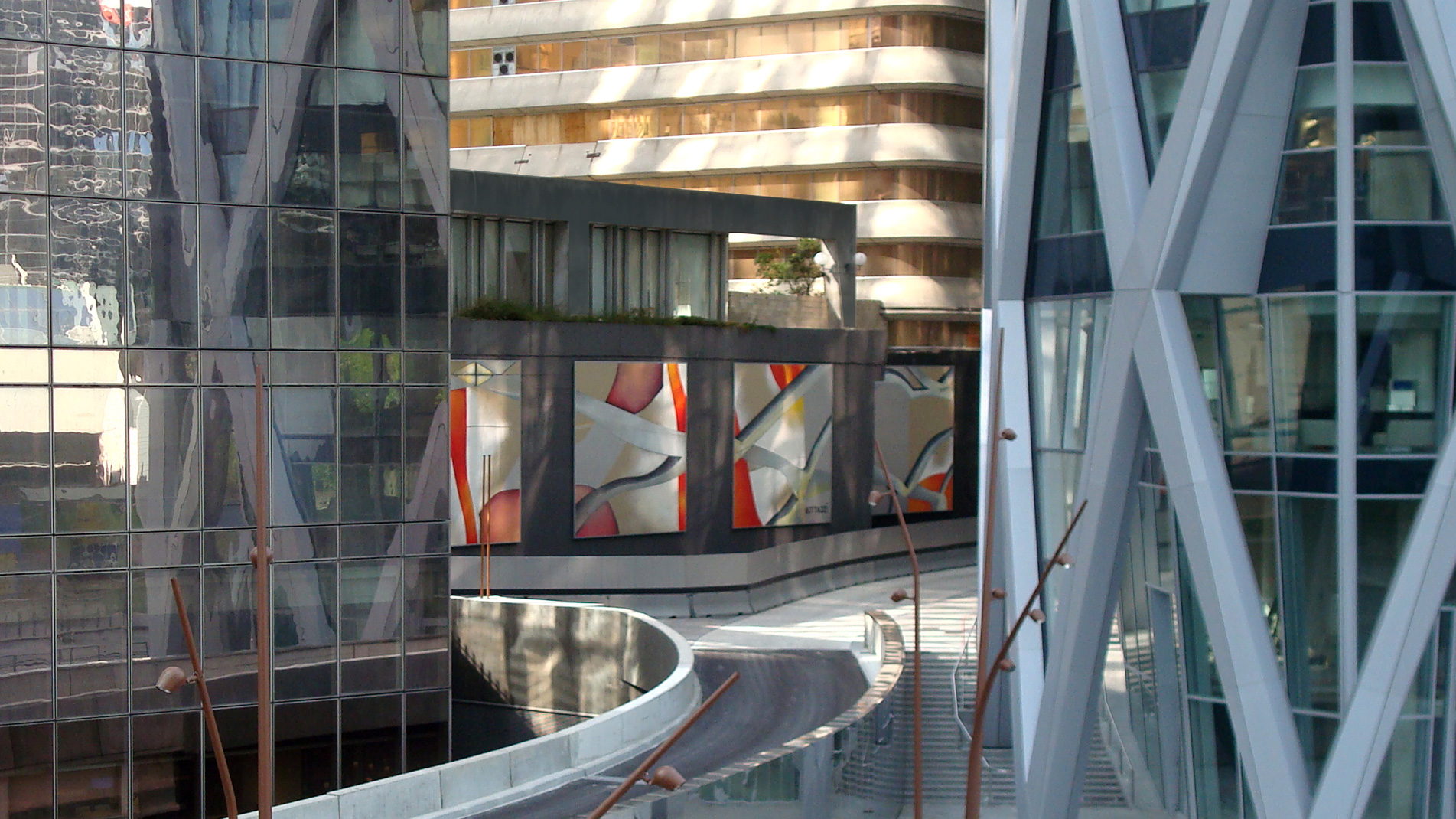
216 square meters’ painting ©
“The Paris Business District is putting on a show and doing so with dizzying boldness! At the foot of the glass and steel skyscrapers, the forecourt has become an extraordinary contemporary art gallery. Created in three months, the monumental fresco by the painter Guillaume Bottazzi is the 70th work in what is the largest open-air modern and contemporary art complex in France.”
Arc-en-Ciel, Air Caraïbes, inflight magazine, July/August 2015
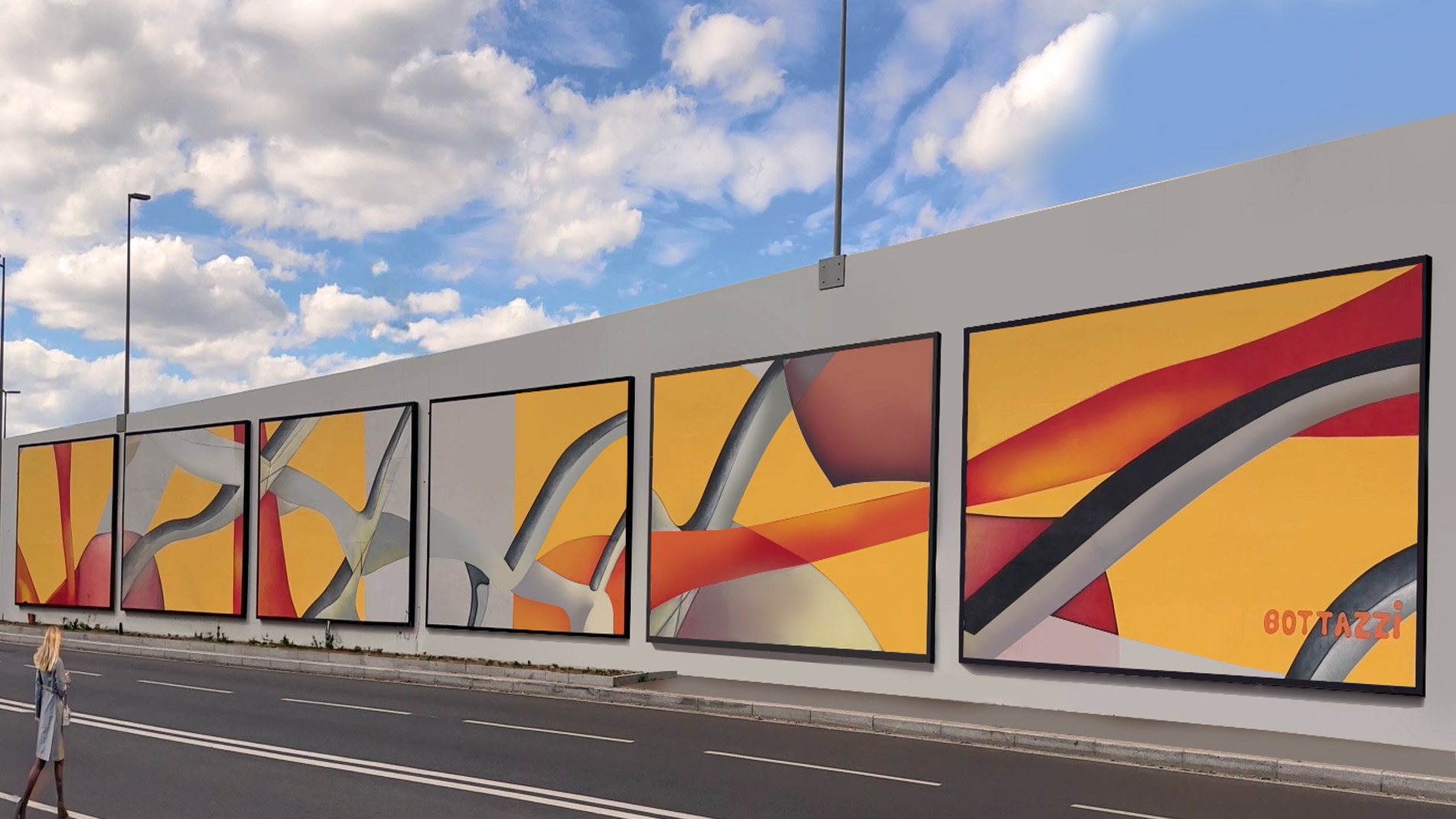
144 square meters’ painting ©
“This pioneer of neuro-aesthetics strives […] to create […] works of art designed, by modifying our brains, to make those who look at them happy. Guillaume Bottazzi, […] has“For two weeks, Guillaume Bottazzi painted grey, red and yellow curves between the Arche de la Défense and the Paris La Défense Arena, a high-traffic area during the Olympic Games, as the sports hall will host aquatic events. Visible from the stairs of the Arche, this polyptych accompanies the wall of the circular boulevard. Six 6 x 4 m paintings cover a 144 m2 façade.”
Le Parisien newspaper, July 2024
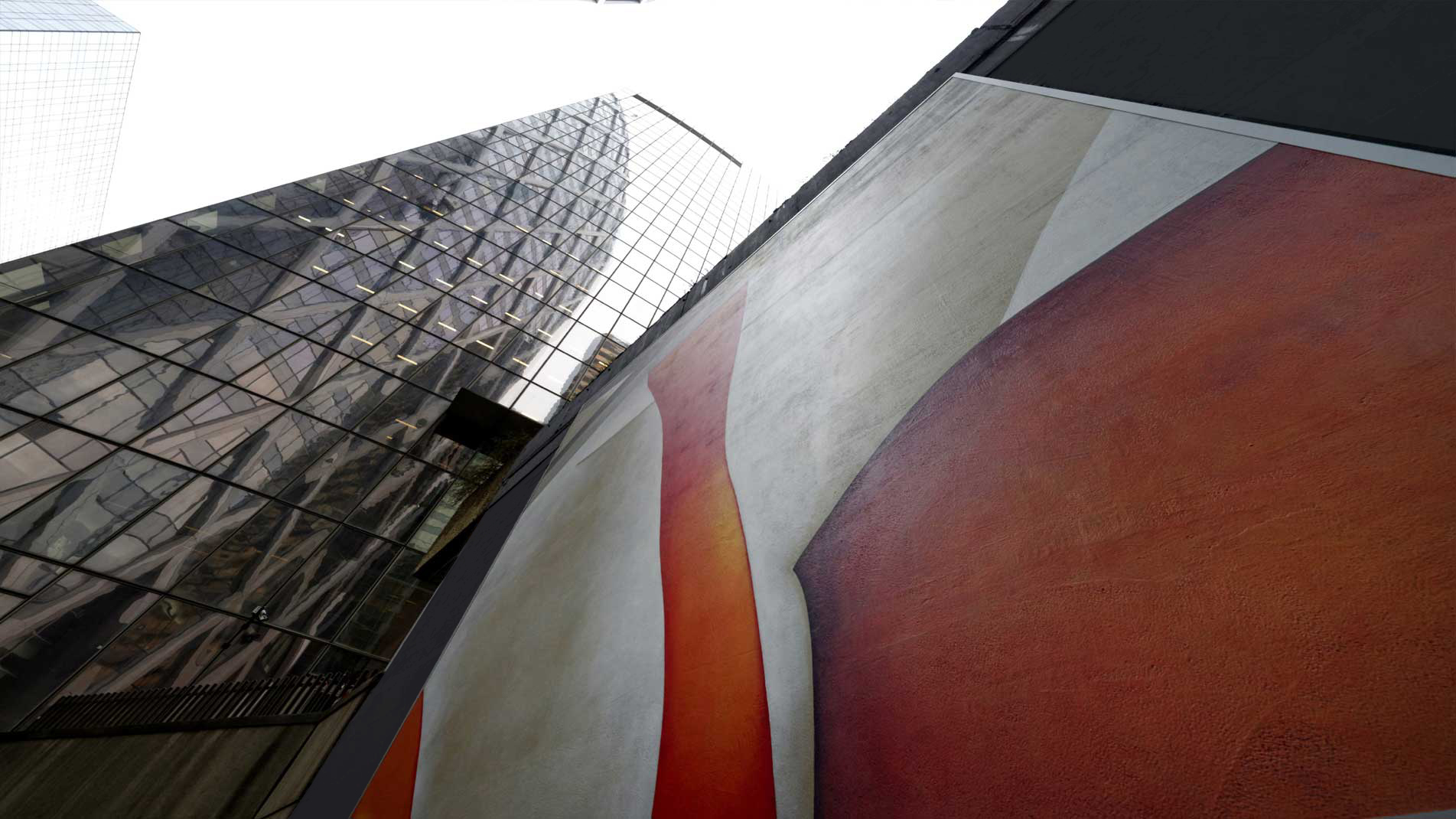
216 square meters’ painting ©
“Guillaume Bottazzi’s arrives at its definitive home in the art spaces of La Défense, where it becomes the 70th work of art on display. La Défense week offers an opportunity to discover the work of Guillaume Bottazzi, who has here created […] a painting covering more than 200 m², in the form of six pictures measuring six metres by six metres. They round off the already rich collection in the business district, comprising works by artists from Alexander Calder to Richard Serra, Joan Miró and César.”
Le Journal du Grand Paris, September 2015
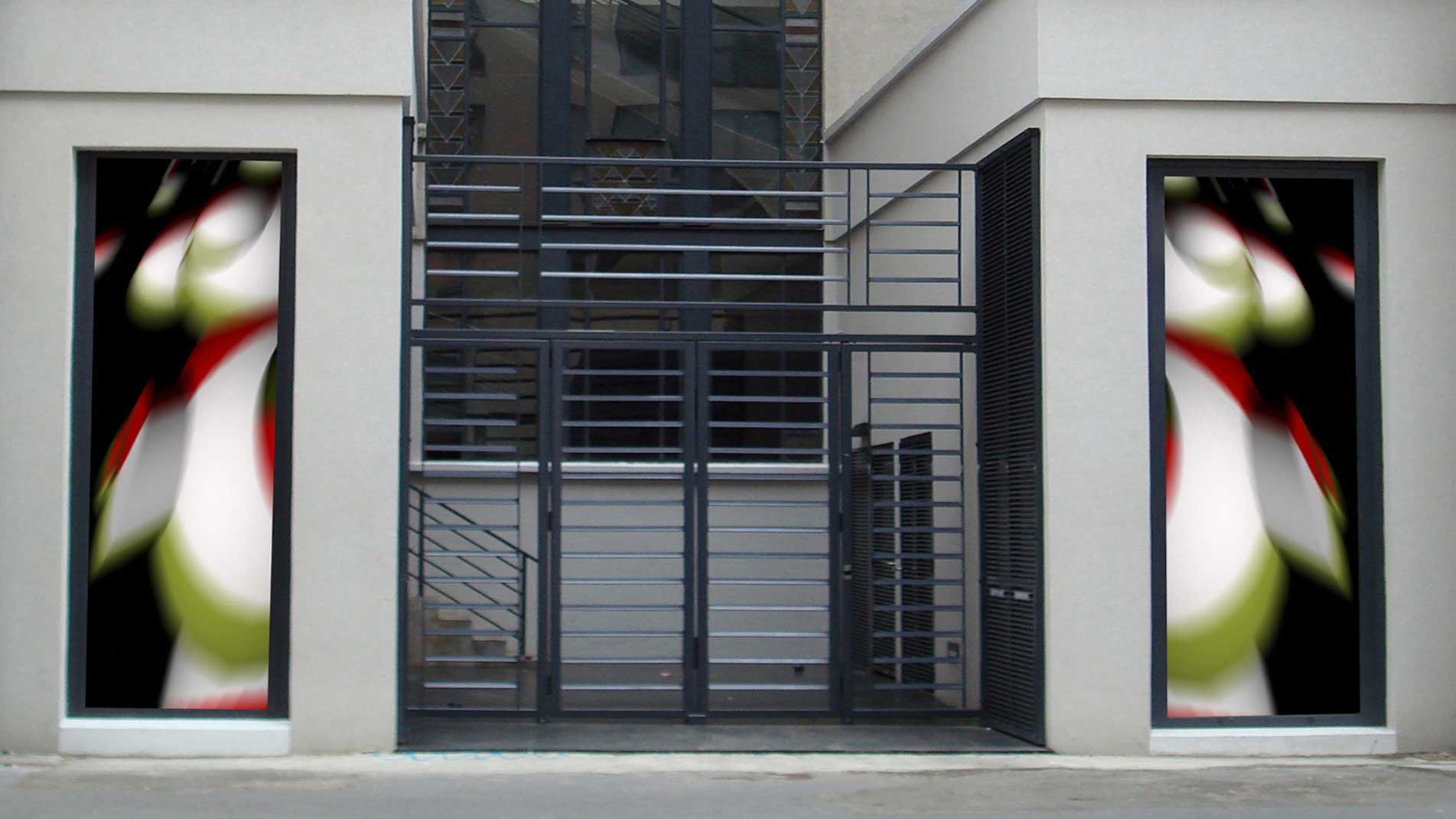
Artworks on one of the first skyscraper in France ©
“Games of urban planning – Guillaume Bottazzi, a contemporary painter, has created two giant works to decorate the entrance to a skyscraper, offering up two strange, soft, moving and colourful shapes to the rigid verticals of the architecture. The visual artist, known as far away as New York and Tokyo, creates a playful world of floating and acidulous curves that offers the concrete a beautiful exercise in weightlessness. A nod to the austerity of many cities.”
Art&Décoration magazine, January 2010
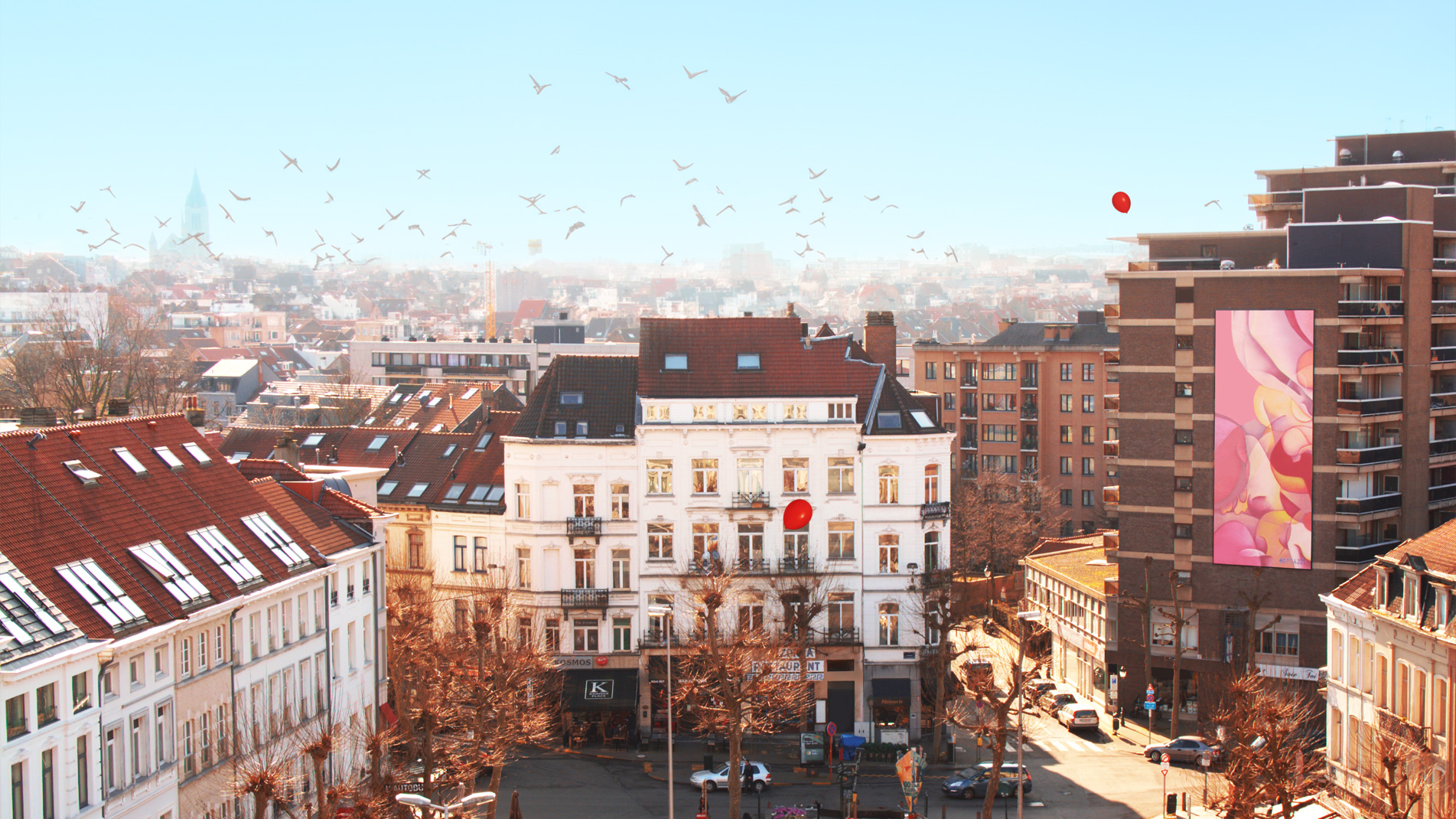
16 meters high painting ©
“Guillaume Bottazzi does not confine himself simply to rounding off the corners of the buildings he covers; his creations use a glazing technique transposed on a large scale to obtain effects of transparency, a play of light and shadow in which the gaze loses itself.”
L’œil magazine & Le Journal des Arts, December 2016
